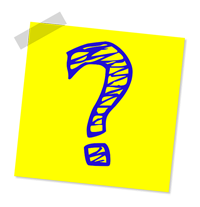 If you’ve been working with your hands for any length of time, then you know that the difference between a professional job and a DIY project isn’t binary, it’s a spectrum. On one end, you’re taking your team out to build a house on a client’s property, and on the other end, you’re building a birdhouse in your garage just because it seemed like a fun way to kill an afternoon. In the middle, you’ve got storage sheds, home repairs, additional rooms, doghouses and so on. At some point along that spectrum, insuring your project becomes a necessity, either for legal or pragmatic reasons. But where exactly is that point? What kind of DIY projects do you need to get insured, and which ones can you afford to not worry about?
If you’ve been working with your hands for any length of time, then you know that the difference between a professional job and a DIY project isn’t binary, it’s a spectrum. On one end, you’re taking your team out to build a house on a client’s property, and on the other end, you’re building a birdhouse in your garage just because it seemed like a fun way to kill an afternoon. In the middle, you’ve got storage sheds, home repairs, additional rooms, doghouses and so on. At some point along that spectrum, insuring your project becomes a necessity, either for legal or pragmatic reasons. But where exactly is that point? What kind of DIY projects do you need to get insured, and which ones can you afford to not worry about?
You have a few main concerns, here:
- Are you investing more than you can afford to lose?
- Is liability a concern?
- Will this affect any existing insurance policies you hold?
Take, for instance, building an additional room onto your home. This is going to have an effect on your existing homeowner’s policy, and if you don’t inform your insurer about your project, you may wind up invalidating that policy altogether.
On the other hand, spending a weekend erecting a doghouse in your backyard probably won’t affect your homeowner’s policy at all, and you’re probably not spending more than a hundred dollars on lumber and other materials. You may even be piecing it together from scrap wood left over from another project. The only concern here is liability, which might or might not be covered by your current homeowner’s policy. To play it safe you can always build a doghouse in the garage and wheel it out to the yard on a dolly to make sure you don’t wind up with barbecue guests stepping on a nail or something, but it’s generally worth checking your policy before starting any such project, just to be sure.
There are projects that may be covered by your homeowner’s policy in terms of liability, but wind up costing a little more than piecing a doghouse together out of scrap lumber. A shed, for instance, or costly home improvements. In these instances it’s down to peace of mind. Are you comfortable working without insurance, or would you like to have a safety net just in case?
If you’re bringing other people onto a project, then of course you’re probably going to want some basic liability coverage, but for more DIY projects than not, the rule of thumb is not to worry about insurance unless you feel uncomfortable without it, it’s required by law as with larger structures like guest homes, or it’s affecting a policy you already hold.
Read more
 Businesses are shrinking or expanding constantly. Start your renewal process today by comparing your policy estimated payrolls with the summary W-2 sheet produced by your accounting department (must be completed by February 1).
Businesses are shrinking or expanding constantly. Start your renewal process today by comparing your policy estimated payrolls with the summary W-2 sheet produced by your accounting department (must be completed by February 1).
Review the 1099s and check these recipients against your files to assure certificate compliance and proper risk transfer techniques.
After reassessing your payroll exposures for the coming year, estimate your current premium. Talk to your agent about optional markets at that premium level, insurance companies have different appetites for different size risks. Find several appropriate insurers.
Many insurers now demand loss control inspections prior to commitment to offering any quote. Get your reports in order. Make sure loss control measures are in place and working. Order loss runs from your current carrier to have on hand.
Most important: leave enough lead time for the inspections to occur. At least ninety days, so new insurers can inspect your operations.
The insurance markets retool every few years and create new identities, new brands within the industry. Currently, insurance companies are deciding what size accounts they will seek, single lines like workers’ compensation or general liability, or supporting lines requirements: like workers’ compensation, general liability or automobile liability. Ask your agent what the current view is among their companies.
The key to having choices is starting early now. Don’t leave yourself at the mercy of the renewal carrier.
While your reassessing your policies, rethink your program as well. Your program consists of the risk management decisions that have subtle but important impacts on your insurance costs. For example: what is your best expiration date? In the construction industry, January first or April first are popular choices in a well-managed risk management program.
One secret within the insurance industry: rates tend to change on calendar quarters. If rates are increasing on April first, you can always renew on March thirty-first if you have enough lead time. But you need to know in advance and have friendly underwriters, and proactive agents.
Calendar quarters allow for government filings to be used as a basis for the insurance auditors, and audits go smoother. Corporate financial years can be good, especially if they fall on calendar quarters. Decide your best expiration date (and you want all liability lines to share that date)and begin 120 days in advance gathering quote information and loss data. Shop early.
Read more

When you face what appears to be a minor claim, have you ever been tempted just to handle it yourself? After all, the loss is minimal, and you’re “saving” your insurance coverage for when you really need it. Some contractors also feel that filing too many small claims could increase the risk of losing the policy, or driving up their premium.
However, there’s more to consider. Bear in mind that every policy contains language to the effect that “No insured will, except at that insured’s own cost, voluntarily make a payment, assume any obligation, or incur any expense, other than for first aid, without our consent.” This means that that if you pay a small claim yourself, and anything goes wrong, the insurance company can say, “You’re on your own.”
For example, suppose someone walks through your job site and steps on a nail. It appears to be a minor puncture wound, and you agree to pick up the cost of an emergency room visit. You might feel that you’ve closed this incident quickly. However, a few weeks later, the injured person calls to say they have a raging infection in their foot and the doctor is checking them into the hospital for what proves to be a long and expensive stay.
If you then report this claim to your insurance company for the first time, will they step in and take over, or tell you that since you never informed them of the incident they’re not responsible? Even if the insurance company pays the claim, you’ve run an unnecessary risk.
What you should have done – as the policy wording suggests – is to inform your insurance company immediately and ask its consent for you to pay the claim. This approach would have made a substantial difference because notifying the company of the claim fulfills your obligations under the policy.
Why go it alone when you have a partner waiting to help?
Read more

One of the messiest and most costly homeowner repairs is fixing a burst, frozen pipe. Water from a burst pipe can cause damage to carpeting, short out electrical appliances and ruin furniture. Luckily, there are several ways to protect your home:
- Keep the heat in your house at a minimum of 50° F.
- Allow faucets to drip slightly, which can alleviate pressure in the piping system.
- Keep interior doors open. This allows heat from the rest of your house to spread, keeping your pipes warm.
- Seal any cracks and holes found near your pipes. This can help keep cold air out of your home.
- Add extra insulation to your pipes. Experts recommend fitting your pipes with foam rubber or fiberglass sleeves.
Water expands as it freezes and puts significant pressure on the metal or plastic pipes that hold it. If you fail to take the proper precautions, your pipes can easily fail during a cold winter, which can be incredibly costly to repair.
Read more

Looking at almost two consecutive years of rising costs, the September 2018 IHS Markit PEG Engineering and Construction Cost Index report revealed an index reading of 62.1, up 3.2 points from August.
The survey’s creators expect overall costs to continue to rise over the next six months, reaching a reading of 79.8, the highest it’s been since 2012.
Contributing to rising costs is damage from hurricanes Florence and Michael, which are expected to put even more demand on construction services while materials and labor remain limited. Although the work will keep contractors busy, homeowners and businesses will have to be patient during the recovery process.
The 25 percent steel tariffs could have a significant impact on construction costs as well. In fact, a Northern Utah wastewater treatment plant saw its price tag increase by $25 million after the tariffs. With steel prices jumping by 31 percent since January, developers may rethink future large-scale projects.
Read more

The International Risk Management Institute’s Construction Risk Conference (CRC), held from November 4-7, 2018, in Houston, Texas, is designed for construction professionals like you. If you decide to invest in your business and attend this conference, here’s what you need to know.
What is the CRC?
Held annually, the CRC brings together a variety of experts who share up-to-date information about construction industry risks, insurance trends, and strategies and tactics you can take to avoid risks. This year’s sessions include:
- Kathy Antonello, Chief Actuary at the National Council on Compensation Insurance, will discuss “Workers Compensation Trends and Challenges in Construction.” You’ll learn about trends, challenges and ways to manage your Workers’ Compensation program.
- The View from My Seat offers tools you can use to manage new technologies, labor shortages, law and regulation changes, and other evolving construction risks.
- Jim “The Rookie” Morris shares his inspirational and motivational story.
- Breakout Sessions and Snap Talks dive into topics like contracts, design liability, construction delays, and your supply chain.
Who Attends CRC?
The CRC is designed for a variety of people who work in the construction industry. It’s important for:
- General contractors.
- Subcontractors.
- Project owners and managers.
- Developers.
- Construction lawyers.
- Insurance agents, brokers, underwriters, and adjusters.
- Consultants and service providers.
Why should you Attend CRC?
Consider attending the CRC to gain five benefits.
- Gain knowledge about emerging risks, trends and solutions. As you understand new threats in your industry and to your business, you’ll also learn how to manage these challenges in ways that protect your company.
- Position yourself as an expert. Attending a conference will enhance your knowledge and understanding. Use the information you gain to improve your business offerings and reputation as an expert.
- Expand your network. Meet and collaborate with other construction professionals as you strengthen valuable relationships and share advice and support.
- Identify your insurance needs. After learning more about your risks, you can identify and purchase the right insurance coverage for your business.
- Rejuvenate your mind and body. While you’ll listen to experts and network with peers, you also have time to rest and relax, which allows you to return to work mentally and physically refreshed.
How do you Register?
Registration is open until November 7. However, you can take advantage of the Standard rate and save $400 when you register before October 12. Save even more with the discounted rate that’s available to project owners and contractors. Also, remember the IRMI Conference Guarantee. You can request a registration fee refund if you don’t get your money’s worth from the CRC.
Invest in yourself and your construction business when you attend the 2018 IRMI Construction Risk Conference. It’s good for business.
Read more
 If you’ve been working with your hands for any length of time, then you know that the difference between a professional job and a DIY project isn’t binary, it’s a spectrum. On one end, you’re taking your team out to build a house on a client’s property, and on the other end, you’re building a birdhouse in your garage just because it seemed like a fun way to kill an afternoon. In the middle, you’ve got storage sheds, home repairs, additional rooms, doghouses and so on. At some point along that spectrum, insuring your project becomes a necessity, either for legal or pragmatic reasons. But where exactly is that point? What kind of DIY projects do you need to get insured, and which ones can you afford to not worry about?
If you’ve been working with your hands for any length of time, then you know that the difference between a professional job and a DIY project isn’t binary, it’s a spectrum. On one end, you’re taking your team out to build a house on a client’s property, and on the other end, you’re building a birdhouse in your garage just because it seemed like a fun way to kill an afternoon. In the middle, you’ve got storage sheds, home repairs, additional rooms, doghouses and so on. At some point along that spectrum, insuring your project becomes a necessity, either for legal or pragmatic reasons. But where exactly is that point? What kind of DIY projects do you need to get insured, and which ones can you afford to not worry about?
 Businesses are shrinking or expanding constantly. Start your renewal process today by comparing your policy estimated payrolls with the summary W-2 sheet produced by your accounting department (must be completed by February 1).
Businesses are shrinking or expanding constantly. Start your renewal process today by comparing your policy estimated payrolls with the summary W-2 sheet produced by your accounting department (must be completed by February 1).


